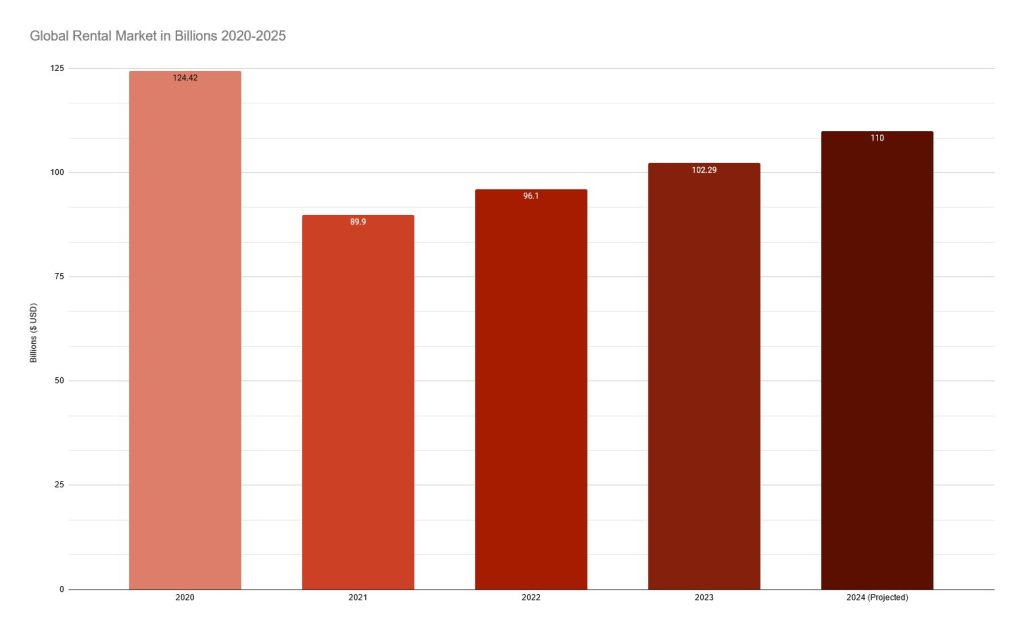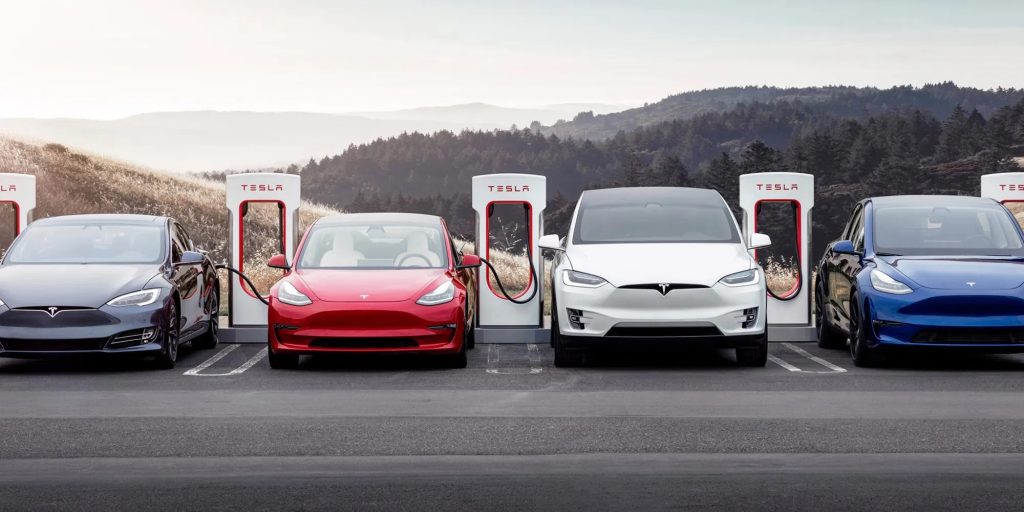Summary
- The rental car market is one of the key pillars of the global mobility sector
- The global pandemic caused a 30% hit in total market valuation 2020-2021
- The market, driven by technological advancements and sustainability initiatives, is recovering strongly
- The Asian rental market’s explosive growth demonstrates how important regional dynamics are to the market
- We think that as long as rental car services can keep up with the market shifts and trends, they are likely to see some big profits in the coming years
The rental car industry, a vital component of the global mobility sector, has been a subject of profound interest and scrutiny, especially in recent years.
Marked by large shifts in usage and challenges due to global situations such as the pandemic, it’s imperative to delve into the intricacies of market trends, drawing insights from comprehensive research and data analysis, to see just how much rental vehicles affect modern trends in the car market.
In this article, we’ll navigate through the rental car market trends, amalgamating insights from The Business Research Company’s report and supplementary data from reputable sources.
Market Overview
To start, we need to take a broad view of the rental car market. According to The Business Research Company’s report, the global rental car market was valued at approximately $128.42 billion in 2020.
It’s also crucial to acknowledge the impact of external factors in the past four years, notably the global pandemic, on market dynamics. The pandemic-induced disruptions led to a substantial decline in rental car demand, with global market witnessing a decline of over 30% in 2020, as reported by Research and Markets.

Despite this setback, the industry has demonstrated resilience, with gradual recovery observed in subsequent years to 2023’s valuation of $102.29 billion in 2023. The rental market is projected to reach $146.7 billion by 2028, at a compound annual growth rate (CAGR) of 7.4%.
Technological Advancement Trends
Technological innovation stands as a driving force reshaping the rental car landscape. The integration of innovations and ever evolving technologies has revolutionized both the customer experience and operational efficiency within the industry.
Allied Market Research forecasts a robust growth trajectory for technological integration in the rental car market, projecting an average annual growth rate of around 10% from 2021 to 2028. This number can be deceptive, as it is not a compound growth rate, so it can swing wildly in the actual percentages year to year.
Key technological advancements include the adoption of mobile applications, self-service kiosks, and connected vehicles equipped with telematics systems.

These streamline the rental process, help provide up-to-the-minute fleet management, and elevate the entire customer experience, including the ability to secure a rental over the internet and walking up to the rental service and having your keys already waiting for you.
The knock-on effect of self-service kiosks and internet booking massively reduce wait times and enhance convenience for customers, contributing to operational efficiency gains for rental car companies. Conversely, efficiency improves revenue, so almost all of the major rental companies have adopted all of these technologies in force.
The Impact Of Sustainability Initiatives
Sustainability has emerged as a priority concern within the rental car industry. This has come about as customers have become more environmentally conscious, as well as many governments introducing regulations to reduce emissions and adopt hybrid and EV technologies.
Data indicates a notable growth trajectory for sustainable mobility solutions, with the lowest number a conservative 6.3%, all the way to to 15+% annual growth. This growth underscores the industry’s commitment to reducing carbon emissions and mitigating environmental impact.

Partnerships with renewable energy suppliers, auto manufacturers, and carbon offset providers further amplify the industry’s sustainability efforts.
Major players in this field include Porsche with their e-Fuel carbon capture initiative to provide sustainable hydrocarbons, as well as Tesla working to implement their own rental car service in partnership with major brands, or even have their own rental services at major airports.
Regional Dynamics & Their Impact On The Rental Market
The rental car market naturally exhibits diverse regional dynamics, shaped by factors such as economic development, infrastructure quality, and cultural preferences.
While North America and Europe traditionally dominate the global market share, the Asia-Pacific region emerges as a burgeoning market with significant growth potential.
Analysis of the Asia-Pacific car rental market done by Market Research Future forecasts a CAGR of around 14% from 2021 to 2028, almost double the global expected CAGR. Rapid urbanization, rising disposable incomes, and very rapidly expanding post-pandemic tourism sectors contribute to the region’s market growth.

In fact, it is not speaking a lie that one of the biggest reasons behind the massive recent and projected growth of the Asian rental market is intertwined almost symbiotically to tourism. In pure percentages, each year from 2021 to 2023 has seen an almost 100% increase over the previous year in terms of tourist visits, with 390 million in 2022 and 705 million in 2023.
This is likely to “slow down” however, as international travel in the post-pandemic world has started to level out.
While the Asia-Pacific region is the primary market, that growth in tourism is happening across the entire Asian region. Asia does hold two of the most populous nations in the world in China and India, so internal continental tourism is also included in those numbers.
It is projected that the Asian market as a whole is likely to see over 1 billion tourist visits either in 2024 or 2025. That means nothing but great news for the local rental markets!
The Future Of The Rental Market
The rental car market traverses a dynamic, ever-shifting landscape characterized by technological innovation, sustainability initiatives, consumer preferences and awareness, and regional diversities. Despite challenges posed by the global pandemic, the industry ahs also demonstrated resilience, weathering the disruptions of the past four years with rapid growth expected over the next four.
We think that the rental car market is going to see some very significant shifts in the near future, in line with the “Green Promise” of EVs and hybrids having the biggest impact between now and 2030. The simple fact, analyzing the above trends, is that the vast majority of consumers, especially tourists, prefer to rent, and as long as those in the market can read and ride the shifts, things are looking profitable in a big way.









